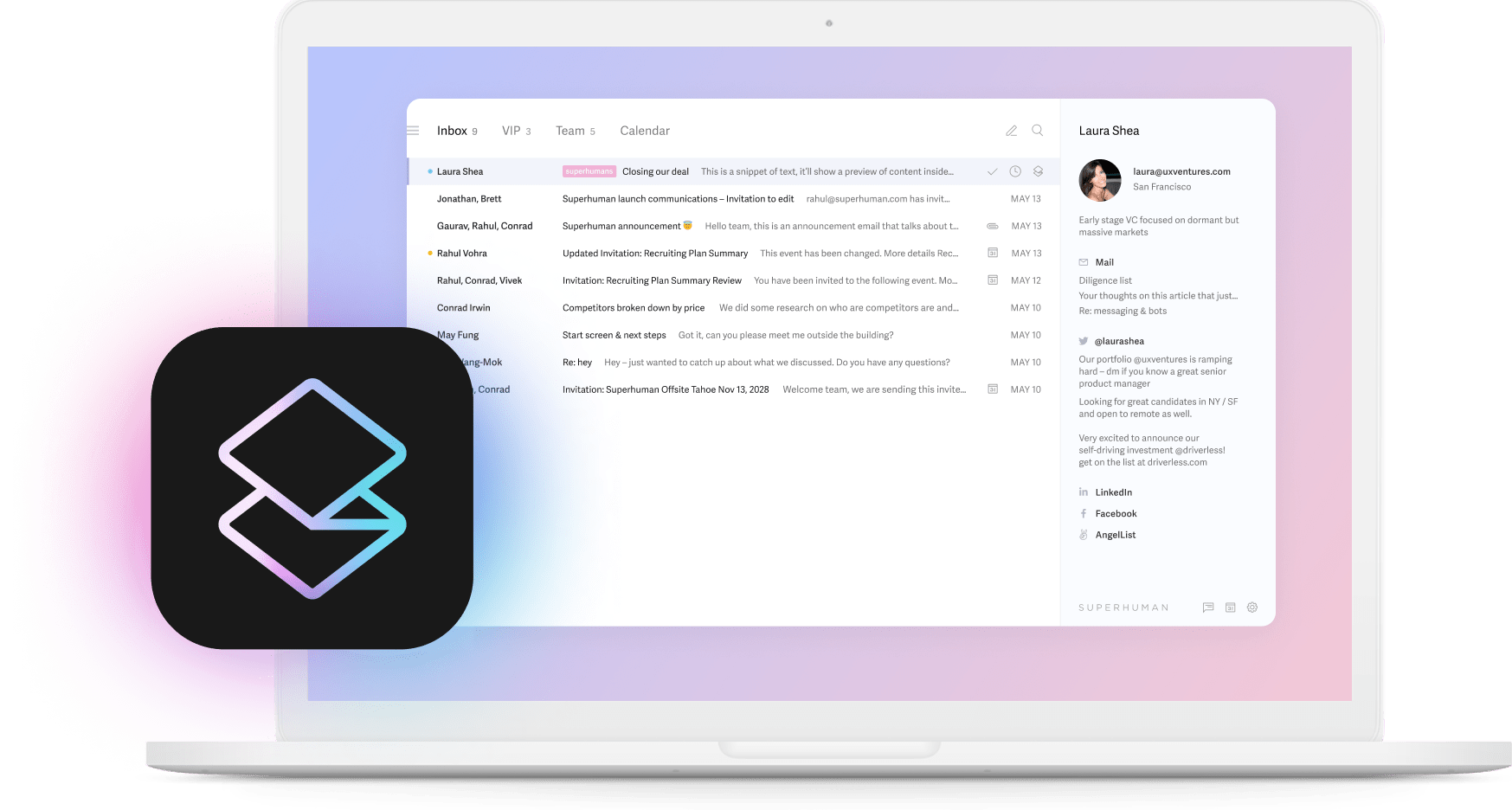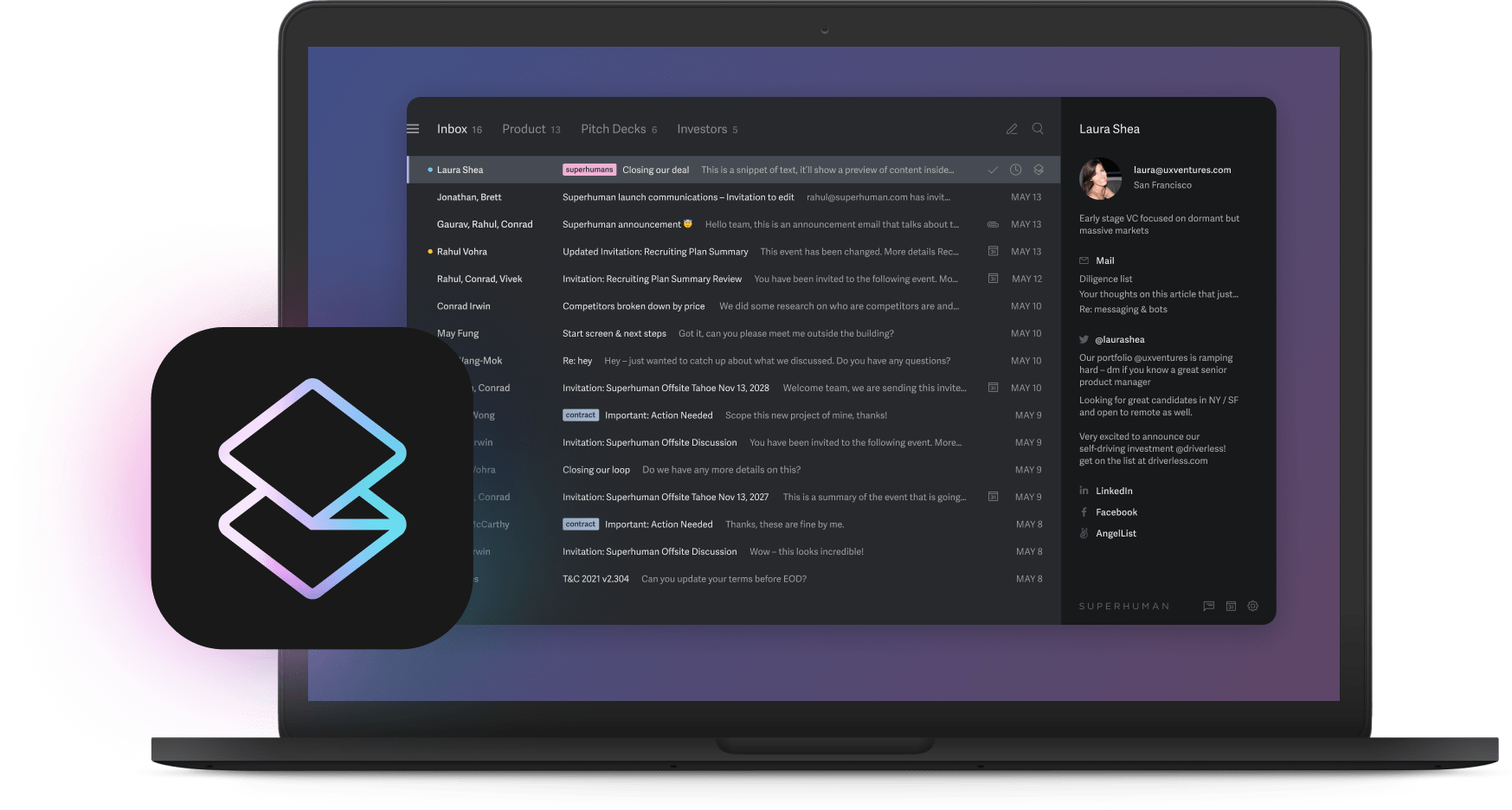
Most teams know their email is broken, but they keep using the same habits that got them into trouble. You spend most of your morning wading through messages. Half the emails you get shouldn't have been sent to you. The important ones get buried under newsletters and notifications.
But here's what's really crazy. The teams with the cleanest inboxes aren't using some secret productivity app. They just figured out how to make team email collaboration work the way it should. These teams save 4 hours per person every week. They respond 12 hours faster and handle twice as many emails in the same time. Their inboxes feel 10x lighter, and workflows become effortless.
The difference isn't talent or luck. When you watch these teams work, you see they've solved the coordination problem that kills most email productivity. They know who handles what. Messages go to the right people. Decisions happen quickly because everyone can see the conversation.
This guide shows you how to build those habits. While some techniques work in any email client, the most effective coordination features require tools like Superhuman that were built specifically for team collaboration. We'll start with changes you can make in the next 10 minutes, then move to the deeper systems that compound over time.
Quick wins that work immediately
You can fix the worst email problems in about 10 minutes. These changes work immediately because they solve coordination, not just organization.
Do these right now:
Set up a shared inbox where your team can see the emails that matter to everyone using Superhuman's team features. No more wondering if someone else replied or if an important message got missed.
Split your inbox into VIP (for people who matter) and Action Needed (for emails requiring responses) with Superhuman's Custom Split Inboxes. Everything else waits in a third bucket you check when convenient.
Learn three keyboard shortcuts that eliminate the most clicking: Cmd+K for quick actions, Cmd+Enter to send, Tab+A to archive. You'll move through emails like you're playing a video game.
Switch from CC to @mentions when you need someone's attention using Superhuman's team collaboration features. This keeps conversations in one place instead of scattered across forwarded emails and side discussions.
Turn on read receipts with Superhuman's Read Statuses so everyone knows when teammates have seen messages. Eliminates duplicate replies and confusion about who's handling what.
Why do these work so well? They solve the coordination problem. Before, you couldn't tell if a teammate had seen an email or planned to respond. You'd either assume someone else would handle it (and nobody would) or jump in yourself (and duplicate work).
With Superhuman's shared inboxes and read receipts, everyone can see what's happening. Superhuman Admin Controls and Team Features allow you to manage your team quickly and easily. For example, Customizing Swipes and Triage Bar makes taking action on messages so easy you don't even have to open them. Just swipe on the message from the inbox to take action.
Most Superhuman customers increase responsiveness using these features with exactly these coordination improvements. But they all started with a proper foundation.
Build the foundation: who does what
Good email habits start with answering a simple question: Who owns this message? Most teams never decide, so every email becomes a guessing game.
Set these up once:
Give every email type an owner and a backup. Support emails go to Sarah, partnership requests go to Mike, and internal questions go to whoever knows the answer best.
Spend 15 minutes training everyone on the new system. Show them the shortcuts, explain the ownership rules, and answer their questions while they try it.
Create @mention guidelines so people get notified about important decisions without drowning in notifications for routine updates.
Draw clear lines between email and other tools. Email for external people and formal decisions, Slack for quick internal questions, and project management tools for task tracking.
Think about what happens without these rules. Someone sends an email to the whole team asking a question. Everyone assumes someone else will answer. Three days later, the sender follows up, annoyed that nobody responded. Or worse, three people all respond with different answers.
Clear ownership eliminates this waste. When Mike knows he handles partnership emails, he responds quickly. When Sarah knows she handles support, she doesn't wait for someone else to jump in. When internal questions have a clear process, they get answered by people who know the answer.
Teams using Superhuman's Shared Conversations and Team Comments can collaborate efficiently on emails without switching to other apps. This feature allows you to quickly share all the context when seeking input on a conversation, eliminating the need to forward, Bcc, or switch to another app.
Anyone you share with can reply to comments directly in the conversation to streamline communication in one place.
Let software sort your email
Here's the thing about email triage. Most people try to do it manually, and it's exhausting. Every email forces a decision: important or not? Urgent or routine? Mine or someone else's? You make these decisions hundreds of times per day.
Smart teams automate these decisions.
Set up automatic sorting:
Create priority lanes where urgent emails from important people land at the top. Everything else gets sorted based on rules you set once.
Use status labels that show who's responsible and what happens next. "Waiting for reply," "Mike is handling," "Needs leadership decision."
Let AI learn patterns from how your team works. It gets better at categorizing emails the more you use it.
Filter routine messages like newsletters and notifications into folders you check during natural breaks, not when they arrive.
This eliminates the decision fatigue that kills email productivity. You focus on high-priority messages when you're sharp and batch-process routine messages during downtime. Superhuman's Custom Split Inboxes create intentional sections at the top of your inbox designed to enhance focus. They help you prioritize important emails first and efficiently handle similar types of emails in batches.
While Superhuman's Auto Labels can automatically categorize your emails so you can prioritize what matters most. The key is keeping your rules simple. Complex filtering systems break down when priorities change or new types of emails emerge. Review your filters every few months, but resist the urge to make them too clever.
Keep conversations in one place
Want to know the fastest way to kill email productivity? Discuss important emails in side conversations over Slack or in hallway meetings. This fragments decisions and loses context.
Keep everything together:
Discuss emails internally before sending external replies. Use internal comments where team members can figure out the right answer together without confusing the recipient.
@mention specific people when you need input, but keep the discussion attached to the original conversation.
Replace email-about-email with shared spaces where ongoing discussions can happen without creating separate chains.
Show when you've read messages so other team members know they don't need to jump in.
Create simple formats for internal notes: "Action needed: [what needs to happen]," "Context: [background someone needs]," "Decision: [what we decided and next steps]." This keeps internal discussions organized without creating noise.
Superhuman's Read Statuses let you see exactly when your messages have been opened, making follow-ups faster and more effective. When everything stays in one conversation, new team members can understand the full context immediately. Decisions don't get lost across multiple tools. You don't waste time searching through Slack, email, and project management apps to understand what happened.
Speed up responses with templates
Most teams think templates make emails sound robotic. But good templates do the opposite. They help you respond quickly while sounding more thoughtful.
Build your template library:
Collect emails you send repeatedly by looking at your sent folder. Most teams have 10 to 15 message types they send constantly.
Write templates in your voice instead of corporate speak. Use your normal tone with blanks for details that change.
Share templates across your team so everyone sends consistent, high-quality messages without starting from scratch.
Templates that work for most teams:
Partnership requests: "Thanks for reaching out about [partnership type]. We're interested in [specific aspect]. Our typical process involves [key steps]. Let's schedule a call to discuss [specific topics]."
Guest writing opportunities: "We appreciate your interest in contributing. Our guidelines focus on [criteria]. Please send us [requirements] so we can review your proposal."
Event collaboration: "We'd love to collaborate on [event type]. Our preferred approach includes [format details]. Let's align on [logistics] before moving forward."
Superhuman's Snippets let you compose emails more quickly by suggesting the next few words or entire phrases as you type, and Write with AI helps by summarizing every email, drafting your replies, and supercharging your writing.
The AI analyzes messages you've sent to specific recipients before and matches your tone and voice to them. It learns over time from your writing style, not from corrections.
Update your templates every few months based on which ones work and which need improvement. Templates should make you sound more like yourself, not less.
Measure what matters
You can't improve what you don't measure, but most teams track the wrong email metrics. They count emails sent or time spent in their inbox. These numbers don't tell you if your email habits are working.
Track these instead:
Response time by email type because urgent messages should get faster replies than routine ones.
Percentage of emails handled within target timeframes. Shows whether you have the right capacity and priorities.
Work distribution across team members so everyone contributes without anyone getting overwhelmed.
Hours saved compared to old email habits. Proves the value of time invested in better systems.
Start by measuring how things work now, before you change anything. Then you can see real improvement instead of guessing.
Schedule a short team discussion every month about what's working and what needs adjustment. Ask specific questions: "Which emails take the longest to handle?" "What slows down our responses?" "Which shortcuts save the most time?"
Teams that track email performance get better results than teams that hope for improvement. A 4-hour savings target is a good baseline, and it also gives you something concrete to aim for.
Make good habits stick
Setting up better email habits is easy. Keeping them when deadlines get tight and priorities shift is the hard part.
Build systems that last:
Review your email process every few months to reinforce good habits and adjust for team changes.
Celebrate wins when people hit inbox zero or response times improve. Recognition maintains motivation better than reminders about problems.
Set team goals related to email efficiency that align individual behavior with team success.
Designate someone to answer questions about your email system and spot opportunities for improvement.
Adapt your process as your team evolves. New people need hands-on training, not documentation. Shifting priorities might require different email categories or updated templates. People get tired of tools when they stop learning about features that could help them.
Good email habits compound over time. Teams that maintain organized systems report productivity gains that grow as the habits become automatic. What starts as a conscious effort to check the shared inbox becomes a natural part of how work gets done.
Think about it this way. When teams get email right, everything else gets easier. Faster responses to customers and partners. Clearer internal communication. More time available for work that drives results. Good team email collaboration habits turn a productivity drain into a competitive advantage.






